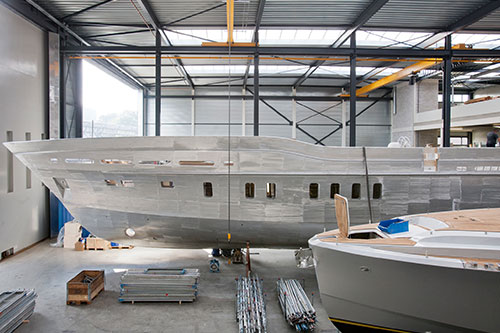Global Capacity: Is The Edge Moving Again?
 By Joel Ogren
By Joel Ogren
May 21, 2018
Building upon the success of service based telecommunications – I watch (and listen) as we no longer talk just about telecommunications, but increasingly we talk about all industry verticals, and how we can enhance the user experience people and society. This is why the question of connectivity and capacity is so important.
Today – over 5 billion people are connected. However, there are a number of people that are still not connected. According to the figures of ITU reports (2016), there are currently 1.2 billion people living in areas with no 3G coverage. But just as important, there are 2.6 billion people who live in areas with 3G coverage and are not using it. As we look at this question of connectivity in realtion to global capacity, we don’t just need to look at the infrastructure challenge, we need to look at the commercial sustainability of the deployment. I am proud to see the sub-sea community increasingly addressing the challenges of things like making sure that people understand the appropriate use cases, show that it creates increasing value for their lives, that the content being delivered is relevant to them, and, of course, that the environment and the affordability is such that they can access it. After all – the global telecom community, service providers, application developers – are the community that created and sustained this incredibly connected world we live in today.
Global connectivty – a collection of subsea fiber, terrestrial fiber, terrestrial copper, wireless, satellite, and of course we still have the “sneaker net” in some cases. These provide the connective tissue that networks and applications utilize to provide continuing improvement to our global connectivity – constantly attempting to increase the user experience of the growing global population that we serve.
These networks have been constantly improved and enhanced creating the building blocks of success: 2G services were launched approximately 25 years ago. When 2G was delivered – it was a real a game changer predominantly because it gave people mobility. But that wasn’t enough for the user experience…so next came the evolution to 3G, which started to give us a access to mobile data as well as access to mobile Internet. Today we are implementing 4G in many locations globally and this is where we really start to experience a shift as the industry successfully put a truly global standard in place as well as creating a platform for the development of the platform-based economy. 5G will be more than just transforming – when fully implemented it provides mobile broadband with faster speed and lower latency then ever seen before. It provides the platform based on the ability for integrating people and things in the Internet of Things and all the different apps/services/devices that will traverse these networks.
To continue reading the rest of this article, please read it in Issue 100 of the SubTel Forum magazine here on page 14.
 By Joel Ogren
By Joel Ogren










